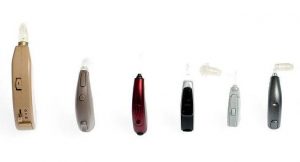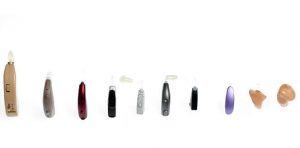In the fitting work of a hearing aid, there are often some users complaining that the effect has not met their expected requirements. The reason should mainly be analyzed from the following two factors:
一
Subjective factors:
1
Attitudes of hearing-impaired patients to hearing loss:
One-to-one hearing-impaired patients are positive or negative attitudes to objective hearing loss, and are one of the important factors affecting the matching effect of hearing aids.

2
Hearing aids for hearing-impaired patients:
A part of the hearing-impaired patients care too much about the wearing aesthetics of the hearing aids, but failed to face the hearing level, which affected the wearing of the hearing aids.
3
Unrealistic expectations for hearing-impaired patients:
It is unrealistic for a part of the hearing-impaired patients to have an unreasonable expectation that the hearing aid wear effect is too high, or that the actual situation of the hearing-impaired level is removed. Hearing aids, as the name suggests, are meant to help hearing-impaired patients to listen, no matter how high-tech hearing aids can not replace their own ear function. Therefore, there must be reasonable expectations.
4
The skill level of the fitter:
A professional and experienced fitter can provide hearing aids with better hearing aids for hearing and hearing needs of hearing-impaired patients. A new fitter or a non-professional fitter may result in a poor fit.

two
Objective factors:
1
The extent and nature of hearing loss:
The degree of hearing loss and the trend and nature of the hearing curve in different hearing-impaired patients will also lead to different effects of the hearing aids after the fitting.
One-to-one moderate hearing loss is generally best for hearing aids; mild and severe hearing loss is second; very severe hearing loss is less effective with hearing aids.
According to the hearing loss nature of hearing-impaired patients, the fitting effect of patients with conductive hearing loss is better than that of patients with mixed hearing loss; and the fitting effect of mixed hearing loss is better than that of patients with sensorineural hearing loss. .
In addition, the fitting effect of the flat curve of the hearing curve will be better than that of the steep rise or fall or the complex irregular hearing curve.

2
The needs of different listening environments:
The effective benefits that can be obtained in different environments when hearing-impaired patients use hearing aids are different. Often listening to sound in a quiet environment is better than listening in a noisy environment, and the speech recognition rate is much higher.
3
Speech recognition ability:
One of the hearing-impaired patients tends to lose time, the lower the speech recognition rate, the lower the listening effect. The lower the help from the hearing aid, the worse the listening experience will be. The degree of hearing loss is not the criterion for the ability of hearing impaired patients to understand speech. The best way is to conduct a speech test for the hearing impaired.
4
The technical level and function of the hearing aid:
The hearing aid technology has developed very rapidly. Different hearing aid technology levels and functions have a greater impact on the hearing of hearing-impaired patients.

5
Whether binaural fitting:
Most patients with hearing impairment are usually hearing loss in both ears. Both ears have many advantages over the single ear, such as binaural orientation, binaural loudness superposition, binaural noise reduction and so on. Listening to a single ear in a quiet environment is similar to that of a pair of ears, but listening in a noisy environment can be very poor.

Link:What factors will affect the use of hearing aids?
REF: ITE hearing aids, BTE Hearing Aids, Digital Hearing AidsThe article comes from the Internet. If there is any infringement, please contact [email protected] to delete it.



